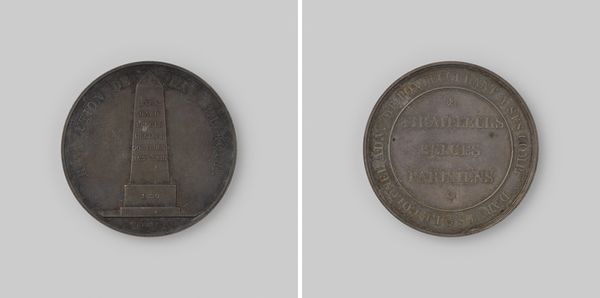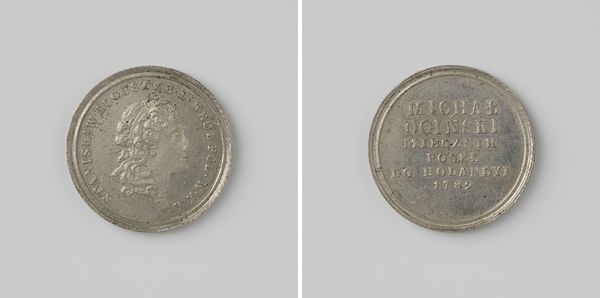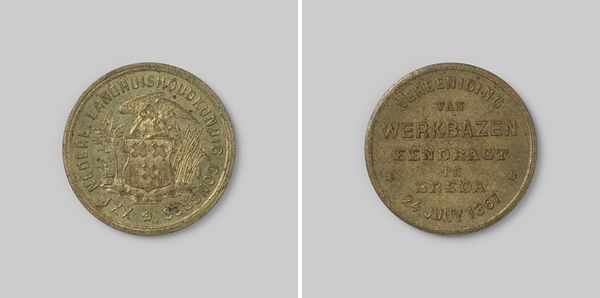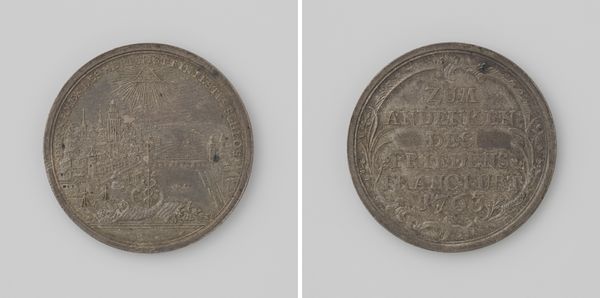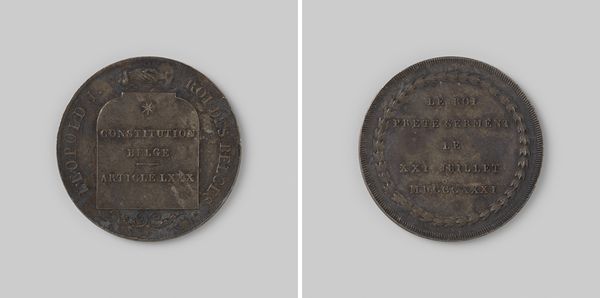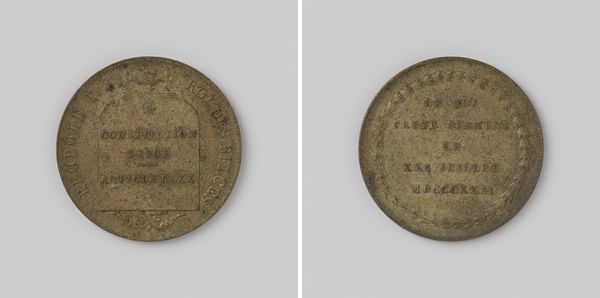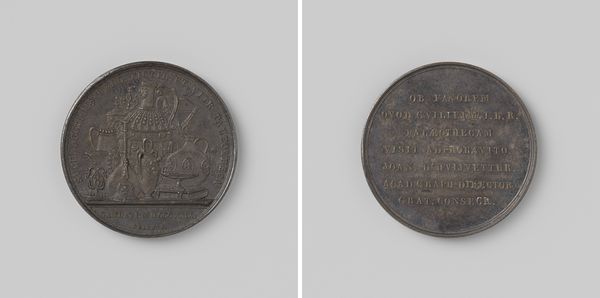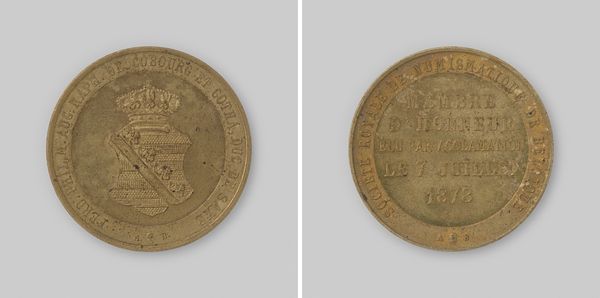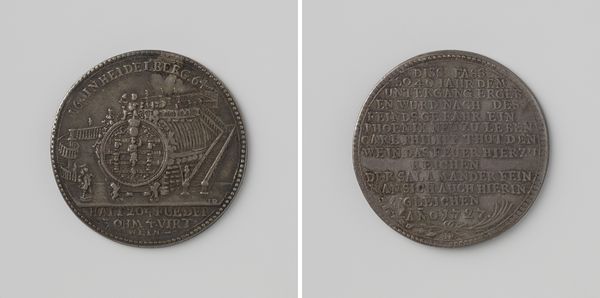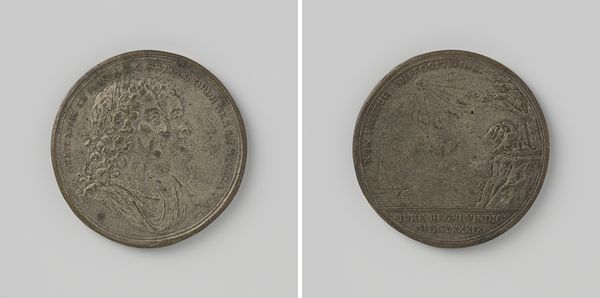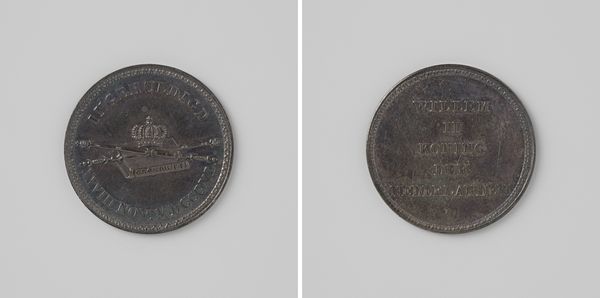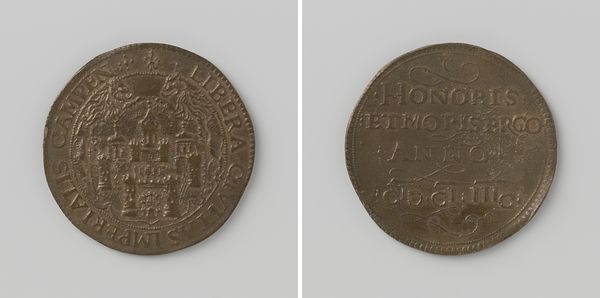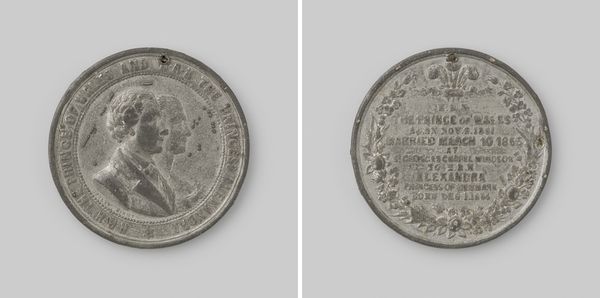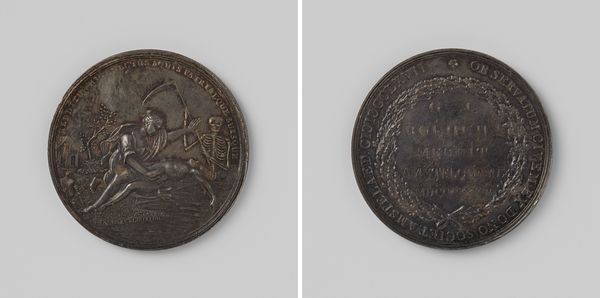
graphic-art, print, photography
#
graphic-art
# print
#
appropriation
#
photography
#
cityscape
#
modernism
Dimensions: diameter 2.3 cm, weight 4.82 gr
Copyright: Rijks Museum: Open Domain
Curator: At first glance, I find this artifact quite compelling. It's a photographic print titled "Tramway Central Buenos Ayres," dating from around 1870 to 1890, created by an anonymous author. The image has been rendered to resemble an old coin or token. Editor: The muted, almost ghostly quality really grabs me. There's a strange sense of stillness, especially given the subject matter—a tramway. It feels heavy, like the weight of history pressed into a small metal disc. Curator: It’s fascinating how this token uses the iconography of the tramway, a symbol of modern progress and urban life, to create a kind of civic emblem. You have the image of the tram itself, pulled by horses, set within a circular frame, almost like a coat of arms. It evokes ideas about the development of Buenos Aires, doesn't it? Editor: Absolutely. And the very materiality of the coin underscores that connection. This wasn't intended to be 'high art.' It likely circulated among the population, used, perhaps, as a commemorative token tied to the tramway's operations or a local anniversary. That speaks to access and usage and production – the real-world circumstances in which art finds meaning. Curator: Exactly. The design cleverly uses the circle itself, a powerful, ancient symbol of continuity, to frame the narrative of Buenos Aires's modernization. On the flip side, you have the inscription, possibly alluding to a period "25 de Mayo al 11 de Septiembre" – perhaps a specific time when the tramway was operational or being celebrated? Editor: We should consider who produced and commissioned the token. What narratives do these commemorative material objects create, sustain and potentially exclude? Consider too how these things circulate, becoming enmeshed in complex systems of consumption, distribution, and memory. The very anonymity of its creator suggests labor lost to the sands of time. Curator: Yes, thinking of collective memory. By representing technological progress—the tramway—with visual language we commonly find in state emblems, and numismatic design, the maker invited residents of Buenos Aires to identify personally with urban life in a profound manner. It transforms everyday infrastructure into a kind of shared civic religion. Editor: I agree, seeing it, no longer simply as a photograph, but a tangible, circulated object—highlights how infrastructure projects became tied to ideas of civic pride. Curator: Indeed. This anonymous maker, consciously or not, captured the way images transform ordinary moments and experiences, by using them to convey a broader vision of civic and social identity. Editor: Looking closely at these entwined themes enriches how we connect objects of visual and material culture. Thank you for your rich perspectives.
Comments
No comments
Be the first to comment and join the conversation on the ultimate creative platform.
